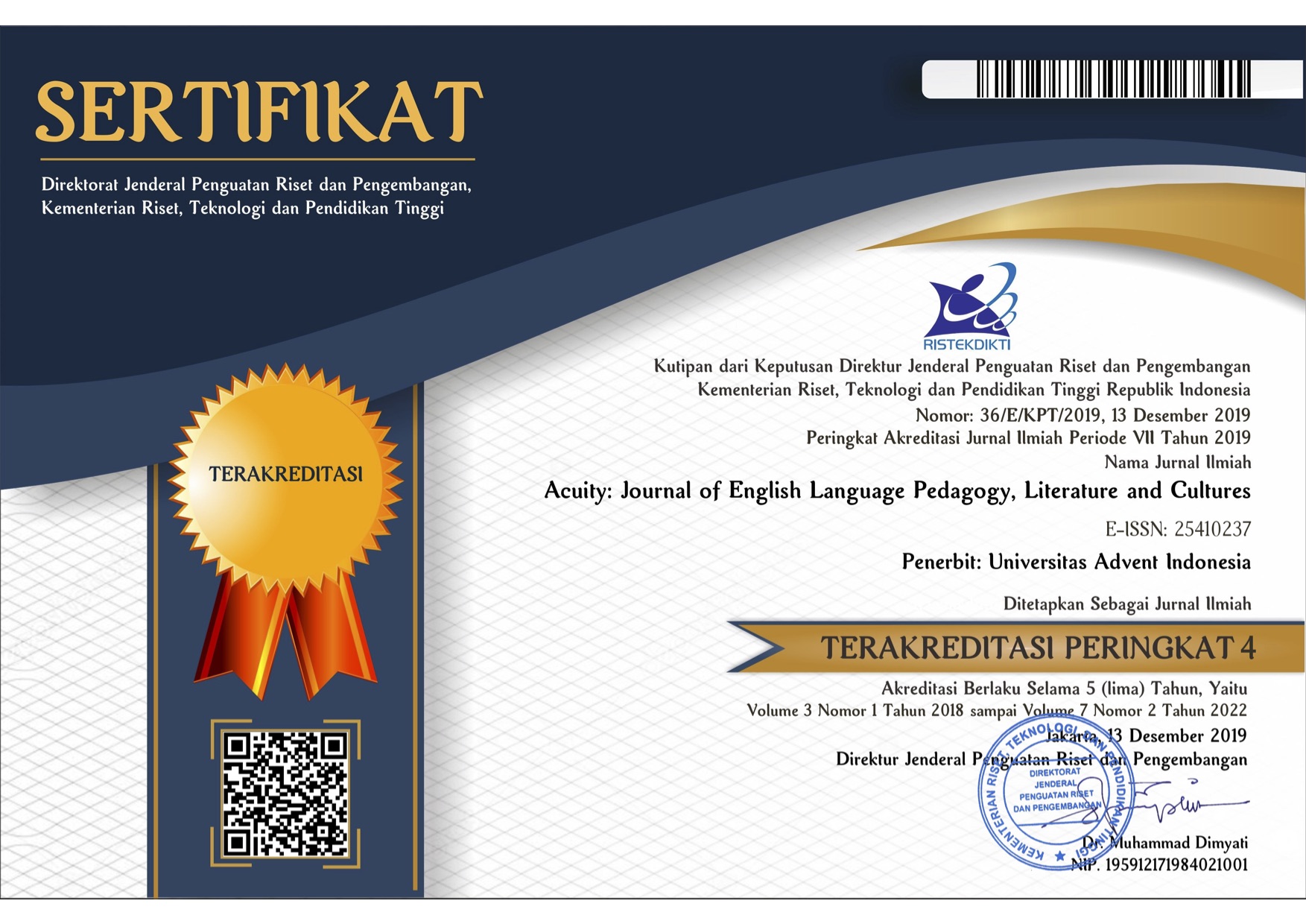PEMBELAJARAN NUMBER HEAD TOGETHER DAN ING NGARSA SUNG TULADHA UNTUK MENINGKATKAN KEMAMPUAN KOMUNIKASI MATEMATIS
Keywords:
Kemampuan Komunikasi Matematis, Numbered Head Together, Ing Ngarsa Sung TuladhaAbstract
Mathematical communication ability is important because it can train students thinking and reasoning, develop creative activities, develop problem solving skills and develop ability to convey information. But previous researchs shows that mathematical communication skill still not high, so it still needs to be improved. The purpose of this study is to know the Junior High School students' mathematical communication improvements, and whether there are different improvement between students who acquire Number Head Together cooperative learning model and Ing Ngarsa Sung Tuladha. This comparative designed study used 7 essay mathematical communication problems and response questionaire as the research instruments. The sample of this study were students in two grades VII of SMP Negeri 3 Parongpong, West Bandung. The result shows that the students’ mathematical communication improvement of those who acquire Number Head Together cooperative learning model and Ing Ngarsa Sung Tuladha are both in the moderate category, and they are not different statistically. Another result shows that students really like to learn using Number Head Together or Ing Ngarsa Sung Tuladha cooperative learning model.
Downloads
References
Annajmi. (2016). Peningkatan Kemampuan Pemahaman Konsep Matematik Siswa SMP Melalui Metode Penemuan Terbimbing Berbantuan Software Geogebra. Journal of Mathematics Education and Science Vol. 2, No. 1, 1-10.
Damayanti, D., Dahlan, J. A., & Herrhyanto, N. (2018). Penerepam Metode Accelerated Learning dalam Pembelajaran Matematika untuk Meningkatkan Kemampuan Komunikasi Matematis Siswa SMP. Jurnal Int∑gral Volume 9 No.2, 15-24.
Hariyanto. (2016). Penerapan Model CORE dalam Pembelajaran Matematika untuk Meningkatkan Kemampuan Komunikasi Matematik SIswa. Jurnal Gammath, Volume I Nomor 2, 33-40.
Hutagaol, K., Saija, L. M., & Simanjuntak, D. C. (2018). Model Pembelajaran Kooperatif Ing Ngarsa Sung Tuladha. Jurnal Padegogik Vol.1 No.2, 89-104.
Kleden, M. A., Geradus, U., & Sugi, Y. (2017). Meningkatkan kemampuan komunikasi matematis siswa smp melalui pembelajaran kontekstual berbasis budaya pesisir. Seminar Nasional Matematika Dan Aplikasinya, 21 Oktober 2017 Surabaya Universitas Airlangga, 151–159.
Lagur, D. S., Makur, A. P., & Ramda, A. H. (2018). Pengaruh Model Pembelajaran Kooperatif Tipe Numbered Head Together Terhadap Kemampuan Komunikasi Matematis. Mosharafa: Jurnal Pendidikan Matematika Volume 7, Nomor 3, 357-367.
Lestari, D. T., Rohaeti, E. E., & Senjayawati, E. (2019). Analisi Kesulitan Belajar Siswa SMP Kelas VIII dalam Menyelesaikan Soal Aritmatika di Tinjau dari Kemampuan Komunikasi Matematis. Journal On Education Volume 01, No. 02, 440-444.
Lie, A. (2002). Cooperatif Learning Mempraktikkan Cooperatif Learning di Ruang-Ruang Kelas. Jakarta: Grasindo.
Makur, A. P., Prahmana, R. C., & Gunur, B. (2018). Kemampuan Berpikir Tingkat Tinggi, Peserta OSK Matematika Tingkat SD, dan Strategi Think, Talk, and Write. Jurnal Pendidikan Matematika Volume 12, No. 2,, 23-32.
Maryoto, G. (2018). Pengaruh Pembelajaran Kooperatif Tipe Think-Pair-Share (Tps) Dan Numbered-Heads-Together (Nht) Terhadap Motivasi Dan Hasil Belajar Matematika. Jurnal Pendidikan, 17(2), 121–128. https://doi.org/10.33830/jp.v17i2.271.2016
Nendi, F., Mandur, K., & Makur, A. P. (2018). Pengembangan Instrumen Penilaian Kemampuan Koneksi Matematis Dalam Konsep-Konsep Matematika SMP. Jurnal Pendidikan dan Kebudayaan Missio Vol. 9 No. 2, 165-173.
Rachmayani, D. (2014). Penerapan Pembelajaran Reciprocal Teaching Untuk Meningkatkan Kemampuan Komunikasi Matematis Dan Kemandirian Belajar Matematika Siswa. Jurnal Pendidikan Unsika, 2(1), 13–23. https://journal.unsika.ac.id/index.php/judika/article/view/118
Ranti, M. G. (2015). Meningkatkan Kemampuan Komunikasi Matematis Siswa Menggunakan Strategi Writing To Learn pada Siswa SMP. Math Didactic: Jurnal Pendidikan Matematika, Vol.1, No.2, 94-100.
Saija, L. M. (2019). Undergraduate students’ motivation and self-regulated learning in learning statistics: Female vs male. Journal of Physics: Conference Series, 1320(1). https://doi.org/10.1088/1742-6596/1320/1/012104
Siburian, L. A. (2019). Meningkatkan Kemampuan Komunikasi Matematis Siswa SMP Menggunakan Model Pembelajaran Cooperative Integrated Reading And Composition dan Ing Ngarsa Sung Tuladha. Jurnal Padegogik : Penelitian Pendidikan Matematika Volume 02, No. 2, 73-80.
Slavin, R. E. (2005). Cooperative Learning: Teori, Riset dan Praktik,. Bandung: Penerbit Nusa Media.
Sudia, M., Maonde, F., & Matematika, P. D. (2016). Pengaruh Kombinasi Model Pembelajaran Kooperatif dan Pengetahuan Dasar Matematika Terhadap Hasil Belajar Matematika Siswa Kelas X SMA Negeri 2 Kendari. 7.
Sumargiyani, Syahfitri, M., Solihah, F., & Asih Khairani, M. (2019). Perbandingan Model Pembelajaran Tsts, Tai Dan Tps Terhadap Hasil Belajar Matematika Siswa SMK. Proceeding of Biology Education, 3(1), 105–111. https://doi.org/10.21009/pbe.3-1.13
Wijaya, H. P., Sujadi, I., & Riyadi. (2016). Kemampuan Komunikasi Matematis Siswa Sesuai dengan Gender dalam Pemecahan Masalah pada Materi Balok dan Kubus (Studi Kasus pada Siswa SMP Kelas VIII SMP Islam AL-Azhar 29 Semarang). Jurnal Elektronik Pembelajaran Matematika Vol.4, No.9, 778-788.
Downloads
Published
How to Cite
Issue
Section
License
Copyright (c) 2021 Jurnal Padegogik

This work is licensed under a Creative Commons Attribution-ShareAlike 4.0 International License.
The submitting author warrants that
- The submission is original and that she/he is the author of the submission together with the named co-authors; to the extend the submission incorporates text passages, figures, data, or other material from the work of others, the submitting author has obtained any necessary permission.
- Articles in this journal are published under the Creative Commons Share-Alike Attribution Licence (CC-BY-SA What does this mean?). This is to get more legal certainty about what readers can do with published articles, and thus a wider dissemination and archiving, which in turn makes publishing with this journal more valuable for you, the authors.
- By submitting an article the author grants to this journal the non-exclusive right to publish it. The author retains the copyright and the publishing rights for his article without any restrictions.








